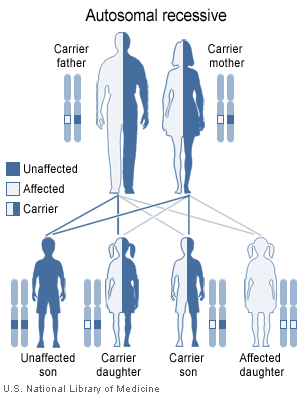EEM syndrome
| EEM syndrome | |
| ICD-10 | Q82.4 |
|---|---|
| ICD-9 | 757.31 |
| OMIM | 225280 |
|
WikiDoc Resources for EEM syndrome |
|
Articles |
|---|
|
Most recent articles on EEM syndrome Most cited articles on EEM syndrome |
|
Media |
|
Powerpoint slides on EEM syndrome |
|
Evidence Based Medicine |
|
Clinical Trials |
|
Ongoing Trials on EEM syndrome at Clinical Trials.gov Clinical Trials on EEM syndrome at Google
|
|
Guidelines / Policies / Govt |
|
US National Guidelines Clearinghouse on EEM syndrome
|
|
Books |
|
News |
|
Commentary |
|
Definitions |
|
Patient Resources / Community |
|
Patient resources on EEM syndrome Discussion groups on EEM syndrome Patient Handouts on EEM syndrome Directions to Hospitals Treating EEM syndrome Risk calculators and risk factors for EEM syndrome
|
|
Healthcare Provider Resources |
|
Causes & Risk Factors for EEM syndrome |
|
Continuing Medical Education (CME) |
|
International |
|
|
|
Business |
|
Experimental / Informatics |
Editor-In-Chief: C. Michael Gibson, M.S., M.D. [1]
EEM syndrome (or Ectodermal dysplasia, Ectrodactyly and Macular dystrophy syndrome)[1] is an autosomal recessive[2] congenital malformation disorder affecting tissues associated with the ectoderm (skin, hair, nails, teeth), and also the hands, feet and eyes.[1][3]
Presentation
EEM syndrome presents a combination of prominent symptoms and features. These include: ectodermal dysplasia (systemic malformations of ectodermal tissues),[1] ectrodactyly ("lobster claw" deformity in the hands and feet),[3] macular dystrophy (a progressive eye disease),[3][2] syndactyly (webbed fingers or toes),[3] hypotrichosis (a type of hair-loss),[4] and dental abnormalities (hypodontia).[2]
Pathophysiology

EEM syndrome is caused by mutations in the P-cadherin gene (CDH3).[5] Distinct mutations in CDH3 (located on human chromosome 16) are responsible for the macular dystrophy and spectrum of malformations found in EEM syndrome,[5] due in part to developmental errors caused by the resulting inability of CDH3 to respond correctly to the P-cadherin transcription factor p63.[6]
The gene for p63 (TP73L, found on human chromosome 3) may also play a role in EEM syndrome.[6] Mutations in this gene are associated with the symptoms of EEM and similar disorders, particularly ectrodactyly.[7]
EEM syndrome is an autosomal recessive disorder,[2] which means the defective gene is located on an autosome, and two copies of the defective gene - one from each parent - are required to inherit the disorder. The parents of an individual with an autosomal recessive disorder both carry one copy of the defective gene, but usually do not experience any signs or symptoms of the disorder.
See also
References
- ↑ 1.0 1.1 1.2 Hayakawa M, Yanashima K, Kato K, Nakajima A, Yamauchi H (1989). "Association of ectodermal dysplasia, ectrodactyly and macular dystrophy: EEM syndrome (case report)". Ophthalmol Paediatr Genet. 10 (4): 287–292. PMID 2628819.
- ↑ 2.0 2.1 2.2 2.3 Yildirim MS, Ogun TC, Kamis U (2006). "Ectrodactyly, ectodermal dysplasia, macular degeneration syndrome: a further contribution". Genet Couns. 17 (2): 149–153. PMID 16970031.
- ↑ 3.0 3.1 3.2 3.3 Senecky Y, Halpern GJ, Inbar D, Attias J, Shohat M (2001). "Ectodermal dysplasia, ectrodactyly and macular dystrophy (EEM syndrome) in siblings". Am J Med Genet. 101 (3): 195–197. PMID 11424132.
- ↑ Balarin Silva V, Simones AM, Marques-de-Faria AP (1999). "EEM syndrome: report of a family and results of a ten-year follow-up". Am J Med Genet. 20 (2): 95–99. PMID 10420194.
- ↑ 5.0 5.1 Kjaer KW, Hansen L, Schwabe GC, Marques-de-Faria AP, Eiberg H, Mundlos S, Tommerup N, Rosenberg T (2005). "Distinct CDH3 mutations cause ectodermal dysplasia, ectrodactyly, macular dystrophy (EEM syndrome)". J Med Genet. 42 (4): 292–298. PMID 15805154.
- ↑ 6.0 6.1 Shimomura Y, Wajid M, Shapiro L, Christiano AM (2008). "P-cadherin is a p63 target gene with a crucial role in the developing human limb bud and hair follicle". Development. 135 (4): 743–753. PMID 18199584.
- ↑ Zenteno JC, Berdon-Zapata V, Kofman-Alfaro S, Mutchinick O (2005). "Isolated ectrodactyly caused by a heterozygous missense mutation in the transactivation domain of Tp63". Am J Med Genet A. 134 (1): 74–76. PMID 15736220.
Template:Congenital malformations and deformations of integument